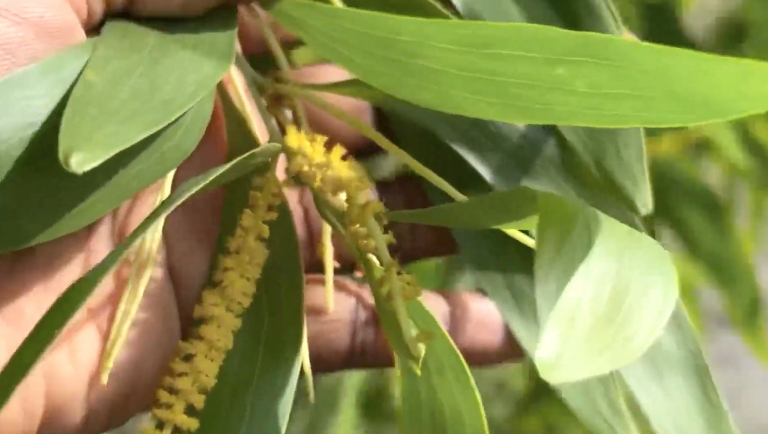Acacia Auriculiformis is not just a Firefighter
I spotted the Earleaf Acacia plant in Lekki Lagos, Nigeria. The Acacia Auriculiformis is not just a firefighter, it has other cool features like using chemicals to inhibit competitors.
The Earleaf Acacia, scientifically known as Acacia auriculiformis, stands as a botanical marvel renowned for its distinctive features, ecological significance, and diverse range of applications. Originating from Australia, this tree has transcended its native landscapes to become a global contender in agroforestry, environmental conservation, and beyond. I found this one in Lagos Nigeria, a place where the biodiversity is not only rich but unique.
Botanical Distinction
The Earleaf Acacia earns its name from the unique shape of its leaves, which are characterized by prominent ear-like lobes near the base. These evergreen leaves, lance-shaped and adorned with a glossy green hue, contribute to the tree’s overall aesthetic appeal. Its flowers, small and yellow, are clustered in globular arrangements, creating a visually striking contrast against the foliage. As part of the Acacia genus, the Earleaf Acacia belongs to a family of leguminous plants, known for their nitrogen-fixing capabilities, contributing to soil fertility.
Ecological Significance
One of the key ecological roles played by the Earleaf Acacia is its ability to thrive in diverse environments. This adaptable tree demonstrates resilience in varying soil types, from sandy to clayey, and exhibits resistance to drought conditions. Its presence is often associated with soil improvement, as the tree’s root nodules host nitrogen-fixing bacteria, enriching the soil with essential nutrients.
Beyond its direct ecological contributions, the Earleaf Acacia is also recognized for its role in habitat restoration. In regions where the tree has been introduced, it has been employed to combat soil erosion and degradation, aiding in the restoration of ecosystems and promoting biodiversity.
Versatile Applications
The Earleaf Acacia’s versatility extends into numerous sectors, making it a valuable resource for communities and industries. In agroforestry systems, this tree has gained popularity for its rapid growth and nitrogen-fixing properties, enhancing soil fertility and supporting sustainable farming practices.

Wood from the Earleaf Acacia is highly valued for its durability and strength. This has led to its utilization in various construction projects, furniture making, and the production of wood-based products. The timber is prized for its resilience, making it a favored choice in regions where the tree is cultivated.
The tree’s uses aren’t confined to wood alone; its bark contains tannins, which have traditional applications in tanning hides. Furthermore, the Earleaf Acacia produces gum exudates with both industrial and medicinal uses, showcasing the plant’s versatility in providing diverse products.
Challenges and Considerations
While the Earleaf Acacia offers a myriad of benefits, it is not without challenges. In some instances, the tree has displayed invasive tendencies when introduced to non-native environments, outcompeting local vegetation. Responsible management practices and ecological assessments are crucial to mitigate potential negative impacts on ecosystems.
Sustainable harvesting practices are also vital to ensure the long-term viability of Earleaf Acacia cultivation. Striking a balance between the economic benefits derived from the tree and the preservation of biodiversity and environmental health remains a critical consideration.
Conclusion
In the grand tapestry of botanical wonders, the Earleaf Acacia emerges as a distinguished participant. From its visually captivating leaves to its ecological contributions and versatile applications, this tree showcases the intricate connections between flora and human endeavors. As we continue to explore the potential of the Earleaf Acacia, it is imperative to approach its cultivation and utilization with a commitment to sustainability and environmental stewardship. In doing so, we can harness the full spectrum of benefits offered by this remarkable botanical specimen for the betterment of ecosystems and communities alike.